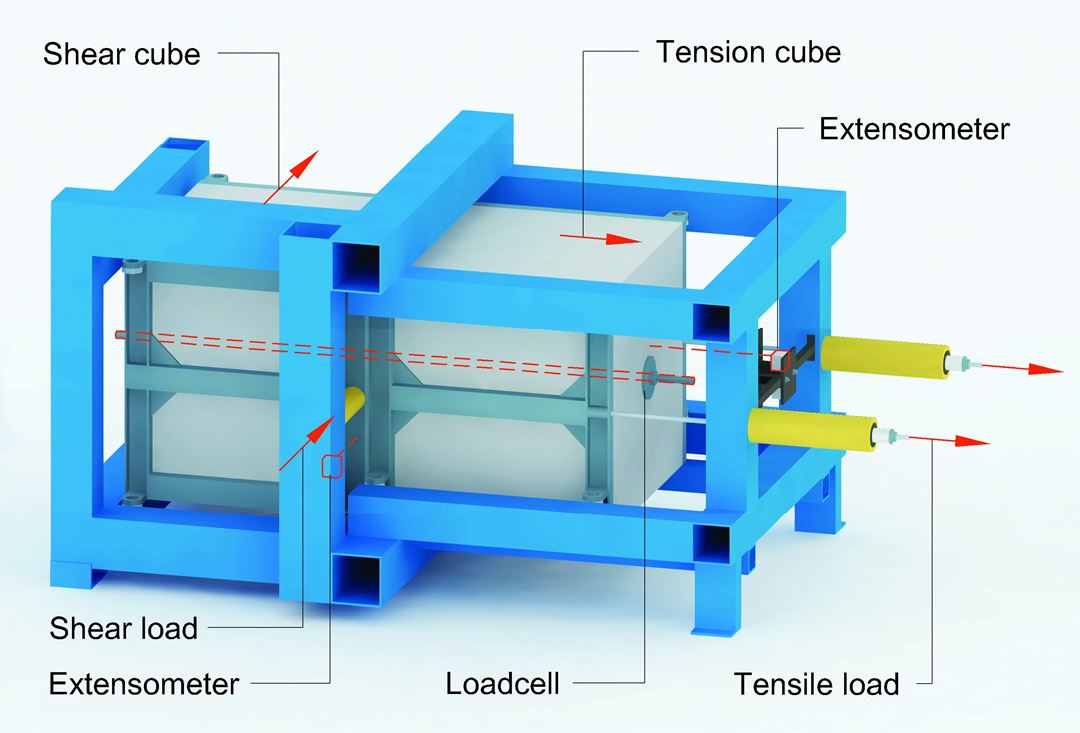In tunnels and mines, the use of different types of bolts is one of the most common methods to ensure tunnel stability by strengthening the rock. There is a wide variety of rock bolts that can be used for rock reinforcement with many different functionalities. A rock reinforcement bolt mounted in a rock mass can function in many ways, depending on the design, behaviour and material of the bolt.
This, combined with the mechanical properties of the rock, such as its deformation capacity, strength and level of stress gives us a myriad of different bolt application options. Full-scale laboratory testing of rock bolts to identify usage characteristics and areas of application is therefore of great importance.
A full-scale test rig has been developed at the Rock Mechanics Laboratory at SINTEF and NTNU in Trondheim for testing rock mounting bolts with load application in both tensile and shear directions, as well as a combination of both. The test setup gives us the opportunity to define bolt capacity in different situations, and also to examine the function of the bolts.
The rock bolt test rig was developed in 1995, and has since been regularly upgraded. The purpose of the rig is to investigate the mechanical performance of different rock bolts when subjected to different loading conditions, thus enabling us to determine the capacity of the rock bolt and select the type of rock support bolt for a given situation. The bolt rig has been used in several masters and PhD projects, as well as for commercial test assignments. Over 35 different types of rock support bolts have been tested in the bolt rig. This has given the Rock Mechanics Laboratory at SINTEF/NTNU a unique experience in this field.
The test rig has a capacity of 600 kN in tensile and 500 kN in shear. The hydraulic pressure cylinders have a maximum stroke length of 250 mm in tension and 150 mm in shear. The bolt rig is instrumented to give a complete load and deformation characteristic. This means that the deformation in the bolt itself and in the washer is measured separately while the load applied to the bolt is measured.
The rock bolts are installed in two blocks that can be displaced relative to each other in two directions in the horizontal plane. Drilling holes through both blocks allow full-scale bolts up to 1.8 m in length to be installed. The borehole diameter is adapted to each bolt type. The client's installation procedure is used as far as practicable. Standard instrumentation on the rig is deformation meters, load cells and hydraulic pressure sensors that record in real time. In addition to the standard set-up, tests can be set up with additional instrumentation, such as strain gauges on the bolt. We customize, as far as possible, the test setup for the given bolt type to be tested, so that both capacity and function are documented.

